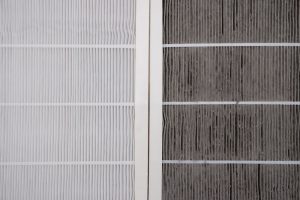When was the last time you thought about the quality of your indoor air? You’ve probably worried about the temperature in your house, and you’ve likely taken note of the humidity levels as well. While the average person considers outdoor air quality pretty often, people don’t think about their home’s indoor air quality that much – even though they should.
Why is improving indoor air quality important?
Why does indoor air quality matter? Because believe it or not, the air inside your home can be just as bad as it is outside if you’re not taking the right steps to improve and maintain it. Indoor air pollutants can range from mildew, contaminants brought in by pets, gas, carbon monoxide, and more. And since the average American spends around 87% of their life indoors, you want to make sure the air you’re breathing is as clean as possible. Here are our top tips for ensuring the air quality inside your home is the best it can be.
1. Change your A/C filter regularly.
Not only is this a good tactic for improving your indoor air quality, but it’s also important for HVAC preventative maintenance. A/C filters have the critical job of keeping air pollutants from cycling through your home and over time, they collect dirt, dust, and debris. You should change your A/C filter regularly, about every 30 to 60 days. If you have allergies, you may want to change them even more frequently than that. Routinely changing your A/C filter will vastly help improve your indoor air quality.
2. Check the filters in all of your other appliances.
Think about the other appliances in your home that use filters. When was the last time you cleaned or replaced the filter on your vacuum cleaner? What about your clothes dryer? Any filter that’s used in your home is likely collecting dirt and dust and cleaning them regularly will help cut down on pollutants in the home and improve indoor air quality.
3. Use your cooking vents.
Did you know that indoor air pollutants can also come from cooking? This is especially true if you have a gas stove, but even electric burners produce pollutants. When you’re cooking, turn on your cooking vent and if possible, open a window as well.
4. Vacuum and dust regularly.
Routine cleaning can also help with improving indoor air quality. You should vacuum and dust your home regularly, paying special attention to the rugs and carpets. Don’t forget to wash bedding, curtains, and draperies, too. And keeping your home clutter-free will help cut down on the amount of dust in it, improving indoor air quality and keeping you more organized.
5. Check your air ducts.
Air ducts run through your home so your A/C can distribute cold and warm air to all the rooms. Over time, they can collect dust, dirt, and even mold. Make sure you routinely have your A/C ducts cleaned to ensure they’re cycling clean, quality air throughout the house.
It’s also important to control the humidity inside your home since high humidity can lead to mold and mildew. And don’t underestimate the value of having indoor plants – they can actually improve air quality by pulling contaminants out of the air.
Get more tips on how to improve indoor air quality
If you have questions about how to improve your indoor air quality or how to take care of your HVAC systems, contact Superior HVAC and Plumbing today.

